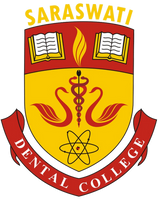
Auto-transplantation is the transplantation of embedded in bone or erupted teeth in the same individual, from one site to another, into extraction sites or surgically prepared socket. Auto-transplantation of teeth has evolved into a viable treatment option for replacing missing teeth, as successfully transplanted teeth can function like normal teeth. Teeth missing for any reason represent a problem for orthodontists, who must decide whether the space should be orthodontically closed, prepared for prostheses or implants or prepared for transplantation.
Teeth needing transplantation include impacted or ectopically erupted teeth, premature tooth loss, loss of teeth because of tumours or iatrogenic grounds, congenitally missing teeth in one arch in combination with arch length discrepancy or clinical signs of tooth crowding on opposing arch , replacement of teeth with bad prognosis and developmental dental anomalies.
Auto-transplantation ensures that alveolar bone volume is maintained due to physiological stimulation of periodontal ligament. Moreover, successful tooth transplantation offers improved aesthetics, arch form dentofacial development, mastication, speech and arch integrity. Auto-transplanted teeth, unlike prosthetic restorations, provide proprioception during function and have good prognosis in growing patients.
When a patient with missing teeth seeks orthodontic treatment for aesthetic reasons, the treatment plan should be based on a comprehensive evaluation of patient age, occlusion, space requirement and shape & size of adjacent teeth.
The prognosis of the auto-transplanted teeth is influenced by preoperative and postoperative conditions which are recognised as prognostic factors.


No Any Replies to “Auto-transplantation in Orthodontics”
Leave a Reply